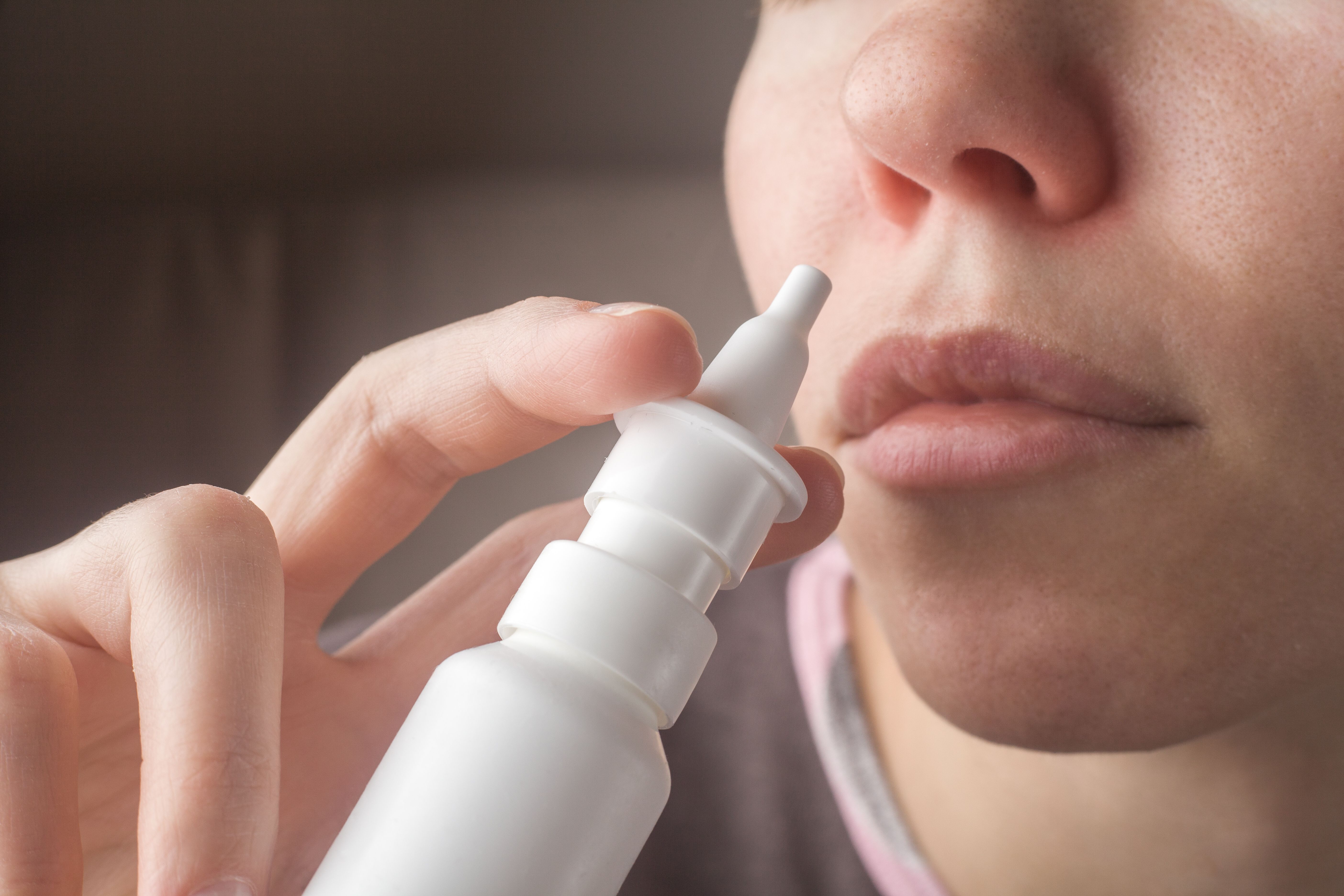News
Article
New Data on Esketamine Nasal Spray as Treatment for Adolescents Contemplating Suicide
Author(s):
These important findings on esketamine nasal spray as a treatment for young individuals with suicidal ideation were presented at the ACNP 2023 Annual Meeting. We interviewed the vice president and head of neuropsychiatry clinical development at Johnson & Johnson Innovative Medicine to learn more.
grey/AdobeStock

Q&A
Data from a new study showing the use of esketamine in adolescents at imminent suicide risk was presented at the American College of Neuropsychopharmacology (ACNP) 2023 Annual Meeting. Psychiatric Times sat down with Carla Canuso, MD, to discuss the important findings and more.
PT: Can you speak to the concerning trend of youth suicide? What about this issue inspired you and your coauthors?
Canuso: Suicide is a leading cause of death among adolescents worldwide.1 According to the Centers for Disease Control and Prevention, as of 2020, 18.8% of high-school students reported seriously considering suicide and 8.9% have made an attempt.2 Up to 80% of adolescents who attempt suicide meet criteria for major depressive disorder (MDD) at the time of the suicide attempt3-6 and up to 60% of adolescents who die by suicide have a depressive disorder.7,8 There is no approved pharmacological treatment for adolescents who urgently need rapid depressive symptom relief. Studies in adults with MDD experiencing acute suicidal ideation and behavior showed that esketamine nasal spray, added to a SSRI or SNRI oral antidepressant, resulted in significant reduction of depressive symptoms within 24 hours of receiving treatment.9 These results inspired us to study esketamine in suicidal adolescents with MDD, a vulnerable and understudied population with great unmet medical need.
Our interest in studying esketamine nasal spray in this adolescent population is also consistent with regulatory requirements in the US and EU.
PT: Your data evaluates the safety and efficacy of esketamine nasal spray as a treatment for MDD in adolescent patients. Can you share some of the highlights of said data?
Canuso: On average, the pooled data from adolescent patients receiving 56 mg and 84 mg of esketamine nasal spray, added to an SSRI, showed clinically meaningful and statistically significant improvement of depressive symptoms 24 hours after the first dose compared to those receiving a psychoactive comparator (midazolam) added to an SSRI.
On average, patients in all treatment groups experienced a reduction in the severity of their suicidality at 24 hours after the first dose of study medication. However, the between-group differences did not reach statistical significance.
No new or unexpected safety concerns in adolescents were observed, consistent with that observed in previous trials of adults with MDD experiencing suicidal ideation or behavior.
PT: How does esketamine compare to other treatments in terms of safety and efficacy and response times?
Canuso: Esketamine nasal spray is approved in the US for use in adults with treatment-resistant depression (TRD) and MDD with acute suicidal ideation and behavior (MDSI). The effectiveness of esketamine nasal spray in preventing suicide or in reducing suicidal ideation or behavior has not been demonstrated. Esketamine nasal spray is the only approved treatment to show benefit on depressive symptoms at 24 hours after the first dose and the only treatment approved for MDSI.
This phase 2 adolescent study of esketamine presented at ACNP is the 1st multi-center, global study in this important patient population.There are no comparative studies of esketamine nasal spray in adolescents. A recently published study comparing esketamine nasal spray and quetiapine, each added to SSRI/SNI, in adults with TRD found that esketamine nasal spray resulted in significantly greater rates of remission from depressive symptoms at 8 weeks and among remitted study participants, significantly lower rates of relapse at 32 weeks.
Esketamine has a characteristic adverse effect profile that is well established and generally consistent across adults and adolescents. Dissociation, or the sense of being outside of oneself, is a unique adverse effect that is transient (peaks approximately 40 minutes after treatment and typically resolves within 1.5 hours of treatment). Other transient adverse effects include dizziness, somnolence, nausea, and bitter taste.
PT: What are the impressions of adolescent patients on the nasal spray versus taking an oral medication? Should clinicians be concerned with issues surrounding adherence?
Canuso: Esketamine nasal spray is given under direct supervision of a health care provider, both in clinical practice and in research settings. In the study of adolescents with suicidal ideation or behavior, participants were all initially hospitalized due to the severity of their psychiatric condition. Study participants were able to self-administer the nasal spray and almost all (approximately 95%) were able to complete the course of treatment, which is 2 doses/week over 4 weeks.
PT: Based on the research, what is the ideal patient? In what cases might it be contraindicated?
Canuso: In our study, at baseline the adolescent patients had moderate to severely depression with the majority assessed to be markedly or severely suicidal. All required inpatient care, and over two thirds of the patients had made a suicide attempt within the past month. When choosing a medication, clinicians consider the benefit-risk equation for each patient, including the severity of symptoms and the risk of their condition.
Because esketamine has the potential for abuse and misuse, the risks and benefits of this medication should be carefully considered in any patient at higher risk of abuse. Our studies of esketamine nasal spray have typically excluded patients with a recent history of moderate or severe substance or alcohol use disorder, and those with a lifetime history of ketamine or hallucinogen-related (ie, LSD, PCP, MDMA) use disorder.
Because of risk for increases in blood pressure, esketamine nasal spray is contraindicated in patients with known aneurysms, arteriovenous malformation, or a history of intracerebral hemorrhage.
PT: This study is the first pharmacological treatment trial conducted in this patient population. What does it mean to you to be breaking ground in this way?
Canuso: To our knowledge, this is the first global pharmacological treatment trial in adolescent patients with acute suicidal ideation and behavior. Adolescent patients at imminent risk for suicide have typically been excluded from clinical trials of antidepressants. Not only are the results promising in showing that esketamine nasal spray can rapidly reduce depressive symptoms in this vulnerable and understudied population, but also that (with the appropriate monitoring and study design) these patients can safely and ethically participate in clinical research. This may open the door for future treatments targeting this important patient population.
PT: How do you think further research on esketamine nasal spray for adolescents with MDD should proceed?
Canuso: In accordance with regulatory requirements and agreed upon pediatric development plans, we will proceed to phase 3 to generate confirmatory data of esketamine nasal spray in adolescent with MDD experiencing acute suicidal ideation or behavior.
PT: How important is it to you that these findings are presented at the American College of Neuropsychopharmacology (ACNP) 2023 Annual Meeting?
Canuso: The ACNP annual meeting is a premiere venue focused on advancing the scientific understanding of and facilitating communication about disorders of the brain and behavior to advance their prevention and treatment. Presenting at this meeting will allow our data to reach basic, translational, and clinical researchers as we work together toward the collective goal of improving brain health.
This meeting has provided the opportunity to share long-term safety data of esketamine nasal spray in over 1000 adult patients with TRD, some of whom were followed on treatment for up to 6.5 years.10
Dr Canuso is vice president and head of neuropsychiatry clinical development at Johnson & Johnson Innovative Medicine.
References
1. Mental health of adolescents. World Health Organization. November 17, 2021. Accessed December 8, 2023. https://www.who.int/news-room/fact-sheets/detail/adolescent-mental-health
2. Web-based Injury Statistics Query and Reporting System. CDC. 2020. Accessed December 8, 2023. https://www.cdc.gov/injury/wisqars/index.html
3. Gould MS, King R, Greenwald S, et al. Psychopathology associated with suicidal ideation and attempts among children and adolescents. J Am Acad Child Adolesc Psychiatry. 1998;37(9):915-923.
4. Nock MK, Green JG, Hwang I, et al. Prevalence, correlates, and treatment of lifetime suicidal behavior among adolescents: results from the National Comorbidity Survey Replication Adolescent Supplement. JAMA Psychiatry. 2013;70(3):300-310.
5. Beautrais AL, Joyce PR, Mulder RT. Psychiatric illness in a New Zealand sample of young people making serious suicide attempts. N Z Med J. 1998;111(1060):44-48.
6. Goldston DB, Daniel SS, Reboussin BA, et al. Psychiatric diagnoses of previous suicide attempters, first-time attempters, and repeat attempters on an adolescent inpatient psychiatry unit. J Am Acad Child Adolesc Psychiatry. 1998;37(9):924-932.
7. Brent DA, Baugher M, Bridge J, et al. Age- and sex-related risk factors for adolescent suicide. J Am Acad Child Adolesc Psychiatry. 1999;38(12):1497-1505.
8. Shaffer D, Gould MS, Fisher P, et al. Psychiatric diagnosis in child and adolescent suicide. Arch Gen Psychiatry. 1996;53(4):339-348.
9. Canuso CM, Ionescu DF, Li X, et al. Esketamine nasal spray for the rapid reduction of depressive symptoms in major depressive disorder with acute suicidal ideation or behavior. J Clin Psychopharmacol.2021;41(5):516-524.
10. Fu DJ, Zaki N, Chen L, et al. ACNP 2023. Annual Meeting. Poster T121.
Newsletter
Receive trusted psychiatric news, expert analysis, and clinical insights — subscribe today to support your practice and your patients.






